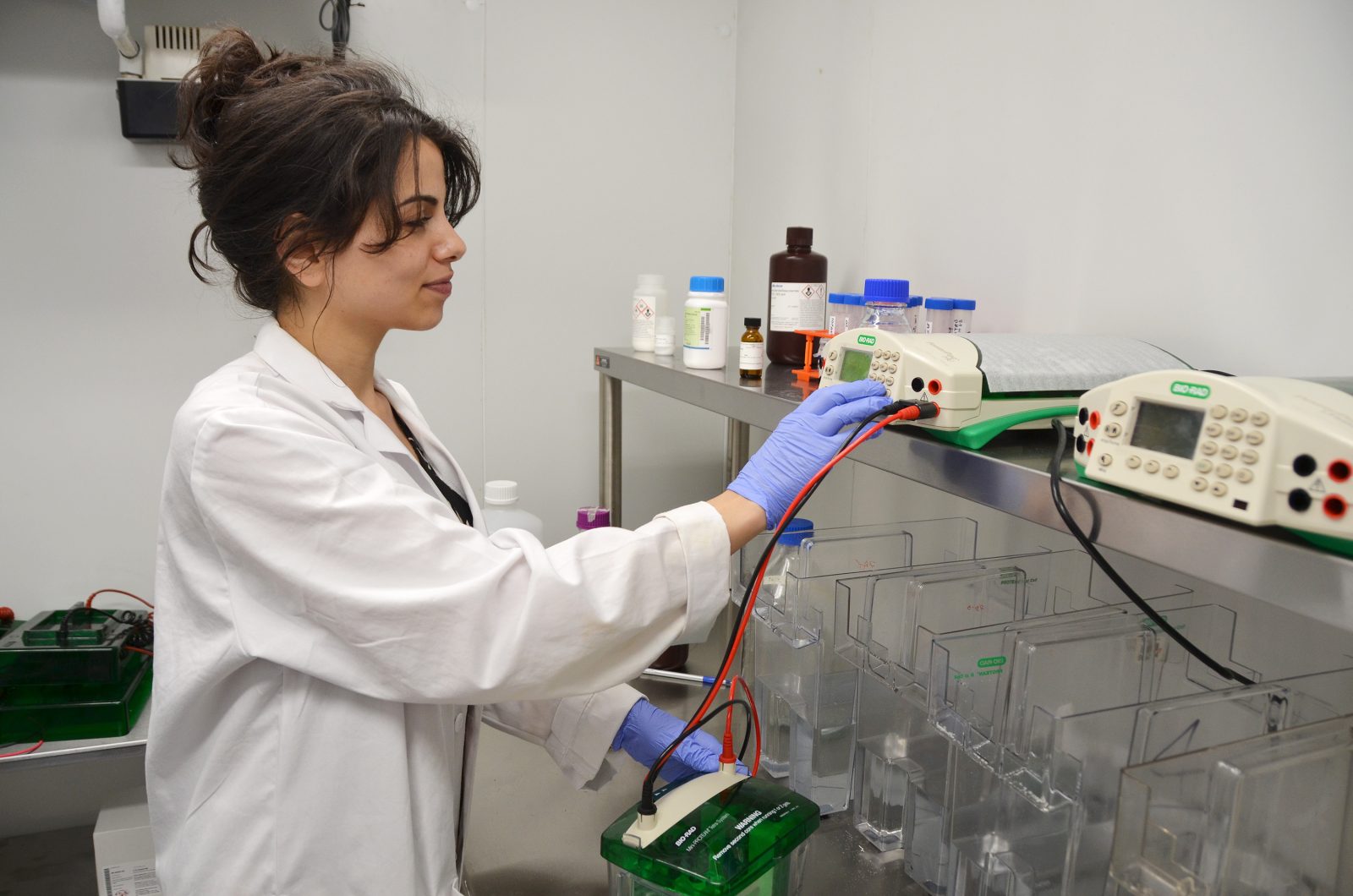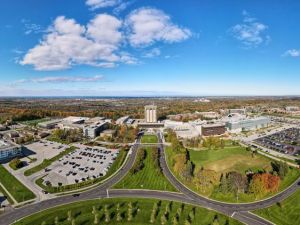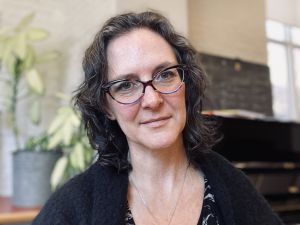Health research that makes headlines often provides society with insight into how to tackle diseases or maintain good health.
But behind every innovation or discovery is a layer of ‘fundamental’ research that’s aimed at researchers rather than the general public.
PhD student Nour Noaman knows this well. The global scholar from Australia is investigating ways to improve how researchers analyze proteins.
Specifically, Noaman is seeking to improve the process of gel electrophoresis, in particular a high-resolution method known as two-dimensional gel electrophoresis.
Essentially, it’s a laboratory technique that uses electric currents to separate mixtures of protein molecules extracted from a tissue sample and sorts these molecules according to their electrical charge and size.
Proteins are then stained with a classic blue dye called Coomassie so that they can be seen and further analyzed.
But the classic Coomassie stain has a reputation for insensitivity, which would suggest it doesn’t reveal the most information possible, explains Noaman.
“It is important that a stain be adequately sensitive in order to detect as much of the full complement of proteins as possible,” she says. “This gives us a complete protein ‘map’ to enable effective comparisons of protein levels between samples.”
Under the direction of Jens Coorssen, Professor of Health Sciences and Biology, Noaman and her lab have developed a new Coomassie staining protocol so that researchers can detect more of the proteins obtained by electrophoresis.
Noaman and her team published their latest findings last September in the journal Electrophoresis.
In early May, Noaman had another paper accepted in the journal Analytical Biochemistry that highlights an additional application of the new Coomassie stain: the reliable measurement of the total protein content of a sample.
She says her research data show that her lab’s version of the Coomassie stain is more sensitive and much cheaper than other stains in the market, which will help a range of researchers in their own work.
It’s vital for researchers to have as clear a picture of proteins as possible, as these are the molecules central to the body’s biological and chemical functioning.
Evidence for many diseases is apparent at the protein level. Earlier this year, Coorssen and his research team discovered that the levels of certain proteins found in a mother’s blood during the first trimester of pregnancy can potentially act as early predictors or biomarkers of premature birth.
Noaman has presented her findings at major international conferences in Portugal, Vancouver and most recently in San Diego.
As part of her PhD program in biochemistry and molecular biology at Australia’s Western Sydney University, Noaman is at Brock under the University Mentorship (UM) program, with Coorssen as her supervisor.
“As a researcher, you want to be showcasing your work, building relationships with other researchers and exploring other work as much as your own. That transdisciplinary approach fuels the best possible research,” says Noaman, when explaining the value of the UM program.
Noaman’s work falls loosely under the fundamental, or ‘basic research’, category. The Organization for Economic Cooperation and Development defines basic research as being “experimental or theoretical work undertaken primarily to acquire new knowledge of the underlying foundations of phenomena and observable facts.”
Basic research rarely hits the headlines because much of it doesn’t have an immediately obvious application to the wider public.
“However, there’s a continuum between that fundamental science and clinical or applied science, and the two have to feed each other,” Coorssen says.
“That’s where the best research comes from; that’s where the best training of the next generations comes from. It’s really important that labs have this balance between fundamental and applied research whenever possible.”
He says he thinks Brock is managing this balance well.










